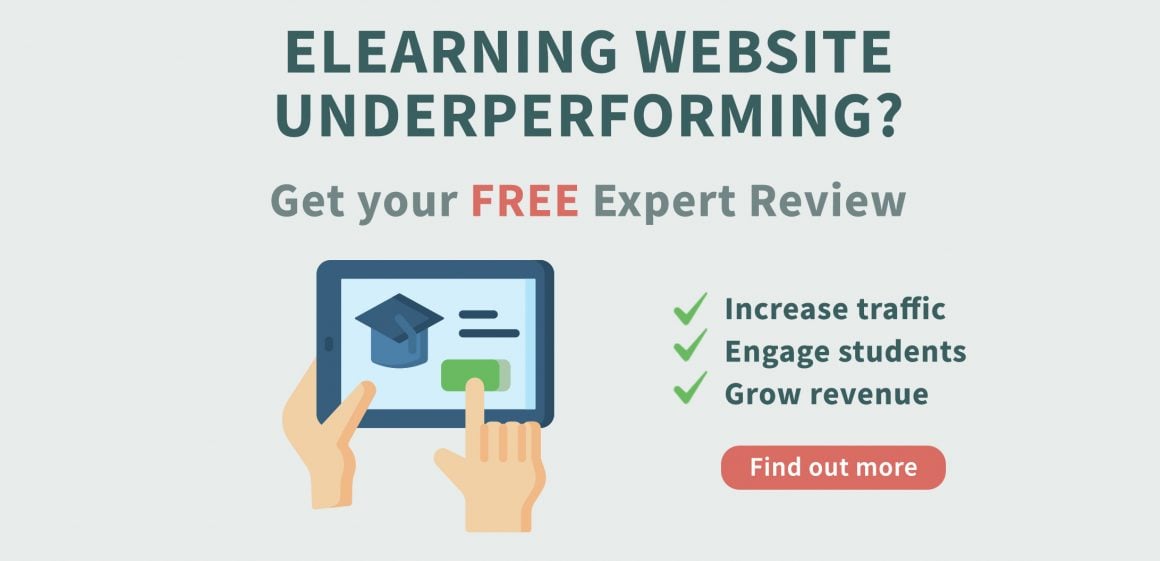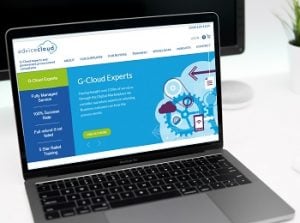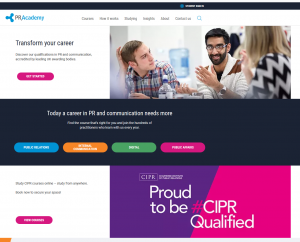Elearning software and platforms as the new reality
No Premier League match has been played since 7 March 2020. Formula 1’s 2020 season still hasn’t started (and won’t until at least July). No more Taylor Swift concerts. But also, no business conferences or lectures since the beginning of March.
The COVID 19 pandemic has created a new reality for most people, all over the world. It is also likely to change the way we live and do business for the long term – even after the virus has been contained, whenever that may be.

TL;DR summary
- Life is increasingly online: remote learning, virtual meetings, and online socialising are now mainstream, and a portion of this shift may remain permanent.
- Business impact: companies should consider how client demand, competitors, employee expectations, and government incentives are affected by the new online-first environment.
- E-learning opportunity: businesses with content can transform it into digital courses or platforms to reach target audiences, leveraging increased interest in online learning.
- Delivery format matters: decide whether courses are live/participatory or on-demand, then design content accordingly, incorporating engagement tools like gamification or social learning.
- Technology choices follow content needs: focus on course objectives first; then select platforms and tools that support modern standards, responsive design, and efficient content delivery.
Index
- Introduction
- How does the new environment impact your business?
- Does your audience need to participate or can your content be delivered on demand to each e-learner?
- How will your content be delivered?
- Technology
Introduction:
Children are being taught using elearning platforms like Google Classroom or Microsoft Teams, parties are held via Houseparty or Zoom (although you should be careful not to get uninvited guests around) and non-essential workers are using Skype, Google Hangouts and again Microsoft Teams day-in-day-out to communicate with their colleagues. Life is moving online more than anyone could have imagined.
We expect that a larger proportion of life may well stay online than was the case before 2020. Especially if some form of social distancing is to remain part of life for years to come as some Harvard researchers are expecting:
“People around the world might need to practice some level of social distancing intermittently through 2022 to stop Covid-19 from surging anew and overwhelming hospital systems, a group of Harvard disease researchers said Tuesday.”
How does the new environment impact your business?
There are lots of things to consider.
Will the demand from my existing clients change in nature?
Will new clients be looking for my services or products?
How will my competitors and my peers respond?
How will government incentives change the level playing field?
What will my employees need and expect?
We don’t have all the answers but want to make sure you consider all elements of your business and how they are affected by this new environment. One thing that seems clear is that transmission of information online instead of (or to complement) face-to-face will become even more critical.
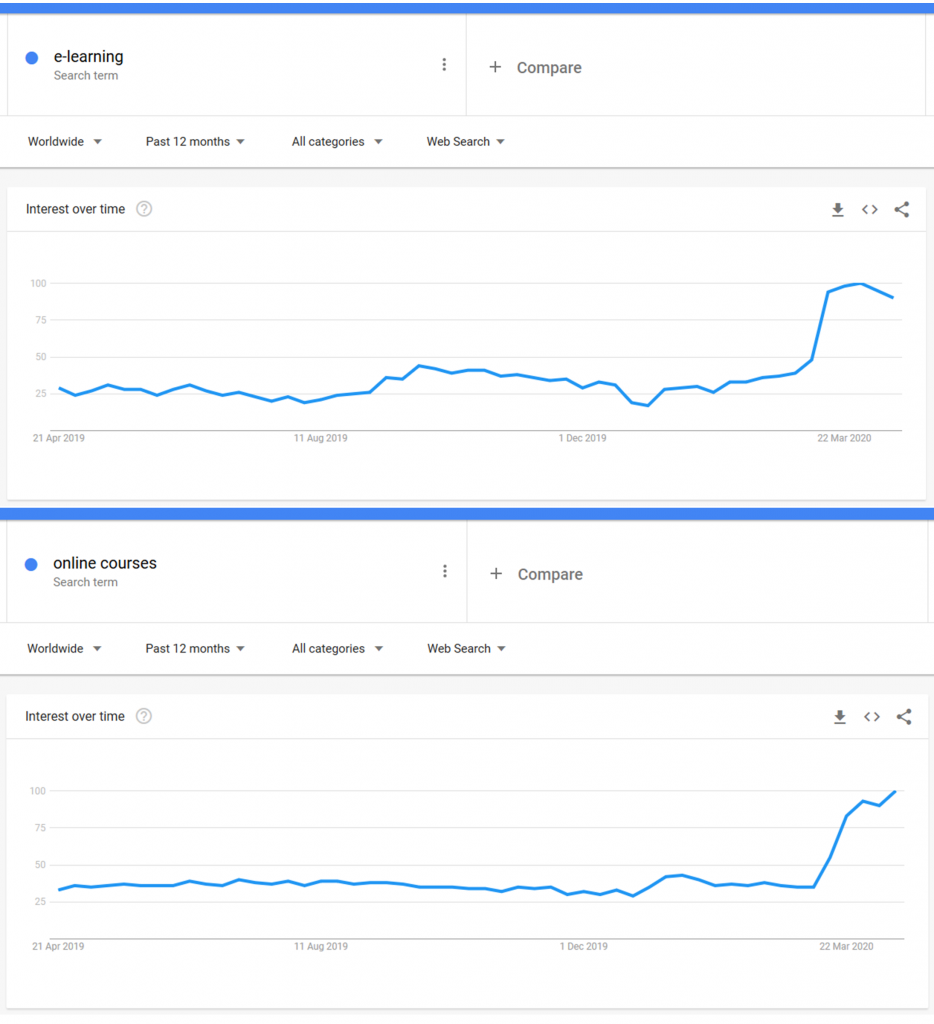
So, if learning / teaching are part of your business and you have content that is not available digitally, you should consider transforming it. Creating your own e-learning platform, software or website, you will be able to help your target audiences by sharing your unique knowledge and skills.
There are many advantages to e-learning. It has come a long way since it’s first faltering steps and there’s a lot that can be done. The key to getting started is understanding what you really need.
Context: Does your audience need to participate or can your content be delivered on demand to each e-learner?
If the online course requires participation this needs different skills to deliver. For example, your digital presenter will not get the usual nuanced feedback from your audience and instead will have to orchestrate involvement like a chairperson in a meeting. There will be delays, technical hitches and bad-internet days to be taken in their stride.
If the course works on demand, more effort needs to go into maintaining the learner’s engagement. Can you use gamification to keep them motivated? Will leaderboards drive performance?
Do you need to add some social interaction anyway? Even students following an on-demand course can benefit from social contact. In fact, social learning is an increasingly important aspect of the strongest e-learning tools.
How will your content be delivered?
If your e-learning platform uses webinars or lecture context you’ll need your digital resources on hand. How and when they need to be delivered depends on the flow of the course. Your presenter will need some technical confidence about the tools that will support their performance. Practice until it comes easily and then practice some more.
In an on-demand context your content will be delivered like an e-learning website via web pages. And like web pages your courses will have to be planned and designed. Thought will have to be given to the media types used: less text and more images, ideally including video. How are you going to assess course completion? A quiz, a submission?
Either way your regular content will need reviewing and preparing for the new delivery context. Some things will work, some things will need reconsidering.
Try to think about the course from a learner’s point of view. Work out how to make your online course enjoyable, fun and entertaining, as well as educational.
Technology
Giving some thought to the context and content for your new online courses helps you to generate concrete requirements to inform the choices of technology.
It really should work this way around. It’s very easy to get distracted by all sorts of wonderful sounding features a particular platform or site can offer. Still, it’s important to remember that the course content is far more significant to the success of an e-learning project.
With the all-important needs of the course considered first, here are some other questions to ask about the tech:
- How is course authoring done? Is it built into the Learning Management System or do you need a special tool?
- Does creating the solution require highly sought after skills?
- Are modern standards supported?
- TinCan
- HTML5 and Javascript
- Responsive, learn anywhere design
- Is the platform reaching for the future or stuck in the past?
Some examples of our work
BrightMinded have a wealth of experience helping our clients think through these sorts of questions and get their e-learning projects flying. To give you a flavour of what can be done, please have a look at some of our work.

Aptimore run a unique online management training platform for senior executives. We created a unique Learning Management System, a unique Learning Content Management System, and a Learning Record System for them, all embedded in a new website.
Advice Cloud are public sector procurement specialists. We built a new website for them adding e-commerce and e-learning elements. We integrated WooCommerce and Sensei (the Learning Management System) to facilitate the purchasing as well as delivery of materials via the website.
PR Academy offer a wide range of training courses leading to qualifications in public relations, internal communication, and public affairs, among others. We built their website, integrating with their CRM platform. We also built their online Learning Management System (LMS), the PR Academy Study Hub, migrating their e-learning courses from the old LMS to WordPress.
What does the future hold?
What will the post COVID-19 economy look like? We don’t know, but we do know it will be different from the pre COVID-19 world. E-learning is here to stay and now is an excellent time to consider what it can do for your business. If you would like to discuss options, do not hesitate to contact us.
If you are starting to plan a new project, why not download our briefing template to ensure you have considered everything.
DOWNLOAD: Our e-learning application brief template!
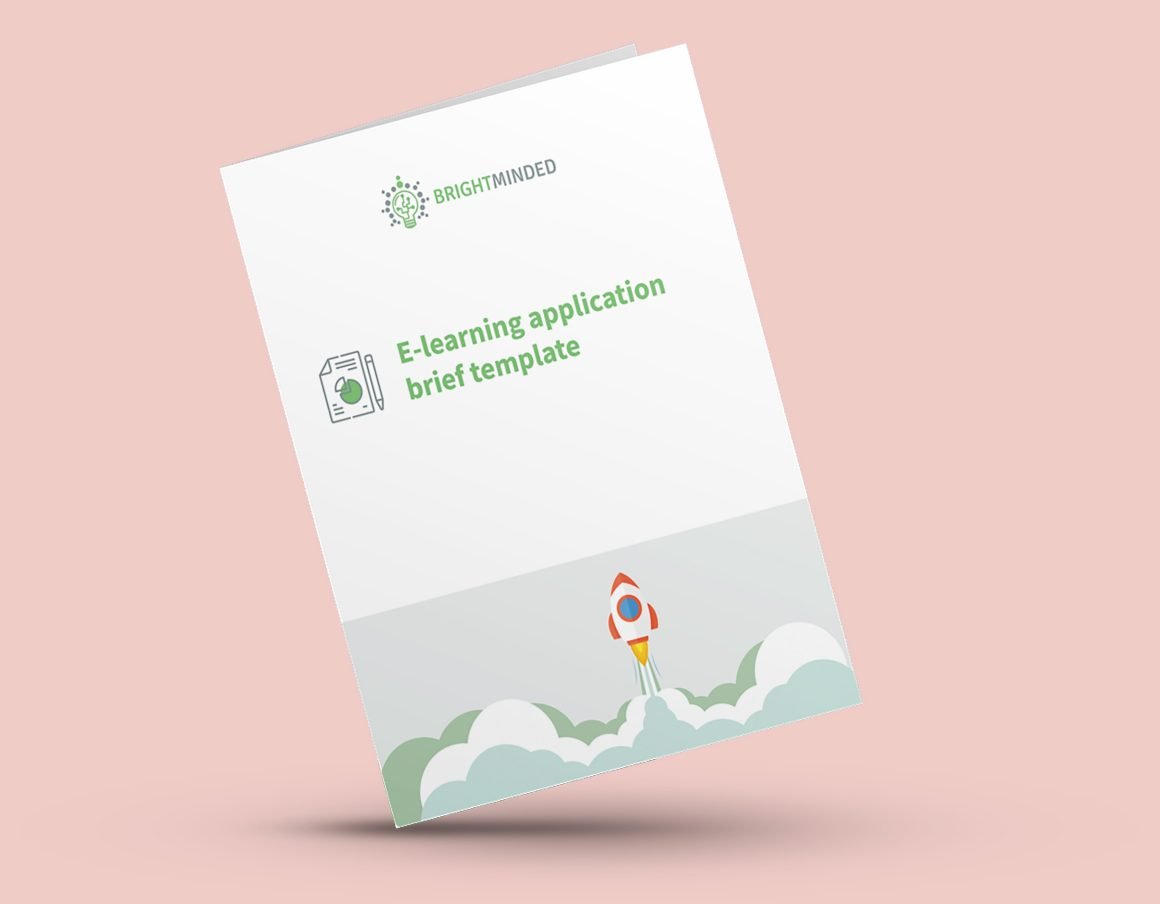
This briefing template will help you to:
- Understand all the questions you should ask yourself when creating an e-learning application.
- Get all your plans and requirements on paper to ensure you have considered everything.
- Maximise the probability of success of your new application.

